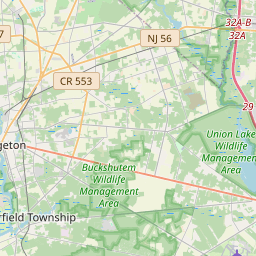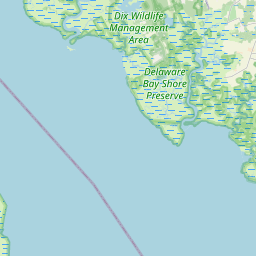Original Army Air Force WWII Pilot Ready-Dayroom Building
Historical marker location:
1 Leddon St, Millville, New Jersey
( Marker is on Leddon Street just west of Reeves Street, on the left when traveling west.)













© OpenStreetMap contributors
Loading...
Searching for other points of interest within 3 miles of this location.New Jersey played a significant role in the Underground Railroad, a network of secret routes and safe houses used by African American slaves to escape to freedom in the North. Many abolitionists in New Jersey helped fugitive slaves, including Harriet Tubman, who is known to have traveled through the state.
About Cumberland County
Cumberland County Timeline
Cumberland County, New Jersey has a rich history that dates back thousands of years. Prior to European colonization, the area was inhabited by Native American tribes, particularly the Lenape people. They lived off the land, hunting, fishing, and farming in the region.
In 1674, the Dutch officially claimed the land as part of New Netherlands, but it was soon taken over by the English. In the early 18th century, English settlers arrived in Cumberland County and established several small settlements. The area was primarily agricultural and relied heavily on the fertile land for farming.
During the American Revolutionary War, Cumberland County played a significant role. It was the site of several important battles and a key location due to its access to the Delaware Bay. Troops from both sides passed through the county, and many farms were destroyed during the conflict.
In the 19th and 20th centuries, Cumberland County continued to thrive as an agricultural region. The construction of railroads and advancements in transportation allowed farmers to expand their reach and sell their produce to larger markets. However, the county also faced challenges, including the Great Depression and later the decline of the agricultural industry. Today, Cumberland County remains an important agricultural area, known for its vast farmlands and natural beauty. Additionally, it is also home to diversified industries, including manufacturing and tourism.
In 1674, the Dutch officially claimed the land as part of New Netherlands, but it was soon taken over by the English. In the early 18th century, English settlers arrived in Cumberland County and established several small settlements. The area was primarily agricultural and relied heavily on the fertile land for farming.
During the American Revolutionary War, Cumberland County played a significant role. It was the site of several important battles and a key location due to its access to the Delaware Bay. Troops from both sides passed through the county, and many farms were destroyed during the conflict.
In the 19th and 20th centuries, Cumberland County continued to thrive as an agricultural region. The construction of railroads and advancements in transportation allowed farmers to expand their reach and sell their produce to larger markets. However, the county also faced challenges, including the Great Depression and later the decline of the agricultural industry. Today, Cumberland County remains an important agricultural area, known for its vast farmlands and natural beauty. Additionally, it is also home to diversified industries, including manufacturing and tourism.
Cumberland County Timeline
This timeline provides a condensed summary of the historical journey of Cumberland County, New Jersey.
- 1694: Cumberland County is established by an act of the New Jersey Provincial Assembly.
- 1748: Bridgeton is founded as the county seat.
- 1778: During the American Revolutionary War, the Battle of Chestnut Neck takes place in Cumberland County.
- 1801: The first Cumberland County Courthouse is built in Bridgeton.
- 1826: Millville is founded as a manufacturing center for glass production.
- 1867: Vineland is incorporated as a planned community for agricultural settlers.
- 1894: Maurice River Township is established by combining portions of Downe Township and Commercial Township.
- 1941: Fortescue is severely damaged by a hurricane.
- 1999: The Cohanzick Zoo in Bridgeton is reopened after extensive renovations.
- 2012: Cumberland County College becomes a 4-year college and changes its name to Cumberland County College.